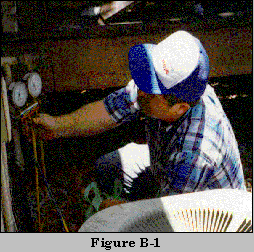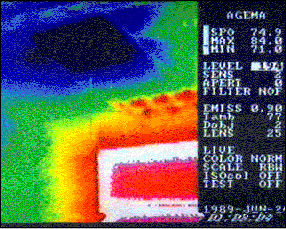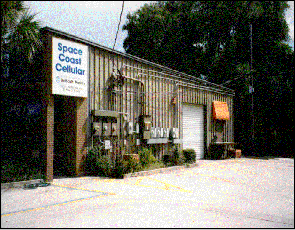Back to Publication
Appendix B
Research Spin-offs
Within the project monitoring, we identified three other potential opportunities
to impact AC demand in small commercial facilities that were not part of
the identified project objectives:
 HVAC System Performance: Prior to the monitoring we discovered that
the majority of the cooling systems had maintenance related problems. These
included fouled filters, condenser and evaporator coils with resulting poor
air flow, low refrigerant charge and improperly operating fans (Figures B-1
and B-2). Although ours is a small sample, the AC contractor who worked with
us to solve the problems, indicated our experience is typical. Based on our
audit measurements, an O&M process oriented towards improving split system
performance in small commercial facilities might produce significant increases
in operational system energy efficiency ratio (EER).
HVAC System Performance: Prior to the monitoring we discovered that
the majority of the cooling systems had maintenance related problems. These
included fouled filters, condenser and evaporator coils with resulting poor
air flow, low refrigerant charge and improperly operating fans (Figures B-1
and B-2). Although ours is a small sample, the AC contractor who worked with
us to solve the problems, indicated our experience is typical. Based on our
audit measurements, an O&M process oriented towards improving split system
performance in small commercial facilities might produce significant increases
in operational system energy efficiency ratio (EER).
Window Treatments: Strip mall shops invariably have a large expanse
of glass facing the store front. In the case of our strip mall, the store fronts'
glass faces east. In each of the shops in which temperature and AC use was
monitored, we observed the pronounced impact of the windows on early morning
comfort and cooling electrical demand (see Figures 27-35). Infrared thermography
(Figure B-3) provides a graphic illustration of the influence of the east windows.
By continuing to monitor the same facility for another summer we could easily
retrofit on better shades/window film and or/sun-screens to examine how such
treatments can impact morning AC demand. Further monitoring might want to locate
a mall with the store front windows facing west to examine how afternoon peak
loads might be effected. Given what was observed in this project, we would
expect that a utility program which targeted malls for window treatments with
storefronts facing south, southwest, west or northwest would find very beneficial
impacts on afternoon utility coincident peak demand.
Reflective Wall Surfaces: The brown metal wall surfaces of the project
mall were found to get very hot when exposed to the sun. The walls contain
R-11 insulation between metal studs. Infrared thermography of the exterior
(Figure B-4) showed that similar to the roof the wall temperature were strongly
effected by shade from plants and color (see the edge of the white garage access
off to the far right). We could also experiment with light colored wall surfaces
to examine their impact on cooling energy use.


Back to Publication
 HVAC System Performance: Prior to the monitoring we discovered that
the majority of the cooling systems had maintenance related problems. These
included fouled filters, condenser and evaporator coils with resulting poor
air flow, low refrigerant charge and improperly operating fans (Figures B-1
and B-2). Although ours is a small sample, the AC contractor who worked with
us to solve the problems, indicated our experience is typical. Based on our
audit measurements, an O&M process oriented towards improving split system
performance in small commercial facilities might produce significant increases
in operational system energy efficiency ratio (EER).
HVAC System Performance: Prior to the monitoring we discovered that
the majority of the cooling systems had maintenance related problems. These
included fouled filters, condenser and evaporator coils with resulting poor
air flow, low refrigerant charge and improperly operating fans (Figures B-1
and B-2). Although ours is a small sample, the AC contractor who worked with
us to solve the problems, indicated our experience is typical. Based on our
audit measurements, an O&M process oriented towards improving split system
performance in small commercial facilities might produce significant increases
in operational system energy efficiency ratio (EER).

